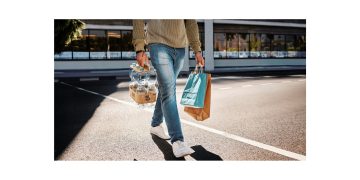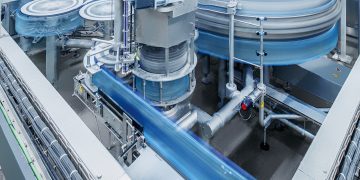For a span of six days, mega-ship Ever Given was stuck in the southern part of the Suez Canal, completely blocking the passageway that connects Asia and Europe. Director of Kuehne + Nagel Korea, Kelly Park, and Tridge’s Engagement Manager in Egypt, Ahmad Shalaby discusses the implications of the blockage on the global logistics industry.
On March 23, mega-ship Ever Given became stuck in the southern part of the Suez Canal, completely blocking passage. The Panama-registered vessel is one of the longest ships currently in operation (400m) with 220,000 tons of cargo capacity and was on its way from China to Rotterdam port. The grounding occurred at 7:40 AM local time at kilometer 151, where the Northbound vessel had a blackout, incurring the blockage. Other sources have reported that the grounding occurred during a sand storm that impaired visibility and strong wind of 40 knots (74 km/hr) which affected control of the vessel.
It was hard to see any advance in the excavation and dredging process during the first four days due to the low tide. Several container carriers even took the alternative route around the Cape of Good Hope. On March 25, as the number of vessels which were initially bound to Europe was queued up dramatically, the Egyptian government ultimately suspended all traffic in the Suez Canal to avoid further congestion.
With the tidal movement on Sunday, authorities and international dredging companies deployed more tugboats to have the mega-ship straightened in the canal. As the excavator continued to dig deep into the ground, tug boats located on each side continued to push the ship towards the waterway. After six days of anxious wait, Ever Given was successfully excavated. There is, however, worry that the incident will have lasting negative repercussions on freight schedules as well as its rates.
According to Kelly Park, Director of Kuehne + Nagel Korea, this is not an issue that just involves the Suez Canal. The repercussions of the incident are tied with year-long labor shortages, port congestion, and container shortages that led to a continuation of high freight costs reaching its peak during Q4 of 2020. “We were expecting there to be a slight deflation of prices after Lunar New Year,” remarked Park.
The deflation did not occur, for which the Suez Canal blockage added fuel to the fire. Container rates that were already high jumped threefold the normal rate for imports and sixfold for exports for the shipping line from Europe to South Korea (Busan port). Tridge’s Engagement Manager in Egypt, Ahmad Shalaby, explains that freight costs in Egypt increased by USD 1,000 for shipping lines to China, 1,300 to India, and 1,500 to Dubai. The delay in the arrival of products also posed a problem.
“A vessel traveling from Germany to South Korea, for example, was delayed initially as there was a shortage of containers in Europe, and went through additional delays because of the blockage. Some containers were left at Chinese ports as any further delays proved to be greatly unprofitable for freight forwarders, which incurred an additional transit period in shipping the containers in a separate vessel from Shanghai to Busan”, adds Park.
The incident has also prompted talks of diversification of the shipping lines, as freight routes to Europe, Asia, the Middle East, and to a larger extent, the world were blocked during the six-day period. One reroute path is through the Cape of Good Hope, which incurs an extra 10-day delay with less guarantee that the ships will pass without obstruction. “This has led most vessels to wait out in Egypt,” says Shalaby.
Other routes have also been searched. A route from Asia to Europe utilizing the Trans-Siberian Railway has also been inspected, which would be pricier than the traditional route but has a shorter transit time. “The significant downside of this, though, is that products sensitive to temperature and damages cannot be transported this way, so that limits the scope of goods. The general rule is to set the numbers of countries you pass through at a minimum,” explains Park.
Also prompting debate is whether the growing shipping volume and the size of vessels to accommodate the growing export volume has had an impact on the incident. The Ever Given, in particular, ranges at 400 meters, transporting up to 20,000 containers. This has led industry experts to speak out about the increased risk of ports accommodating vessels that are becoming larger and deeper.
Some industry experts asserting that the responsibility lies on the shipping companies rather than the ports. According to Shalaby, the impact of the blockage should not be long-term.
“The trouble, for now, is the waiting line, as about 400 vessels per day were queuing up to exit out of the canal. There will still be problems with the availability of containers, and certain vessels will have to skip some of the ports they were originally intended to pass through. Nevertheless, although there will definitely be delays in the schedule of shipments, the effects are not expected to be long-lasting. “
In terms of any potential rise in freight costs, Park explains that “Freight rates are already at levels unseen in the past decade, and they are not expected to rise further now that the blockage has been resolved. If the situation had continued for an extra week or two, we might have seen prices rise by sixfold for imports and even more so for exports. “
As for the container shortage and the year-long high freight costs, Director Park adds that the situation is expected to be prolonged until disruptions incurred from COVID-19 are fully stabilized. “It will depend on how fast the vaccination pans out “, says Park.
Sources
- Interview with Director of Kuehne + Nagel Korea Kelly Park
- Interview with Tridge’s Engagement Manager in Egypt Ahmad Shalaby
- Al Jazeera, “Suez Canal blocked by massive container ship Ever Given.”
- Hindustan Times, “’Ever Given’ finally set adrift. Here’s a timeline of the Suez blockage crisis.”
- BBC, “Suez Canal: Ever Given container ship shifted from shoreline.”
- Tridge, “Mega-ship blockage of Suez might last for weeks.”


















